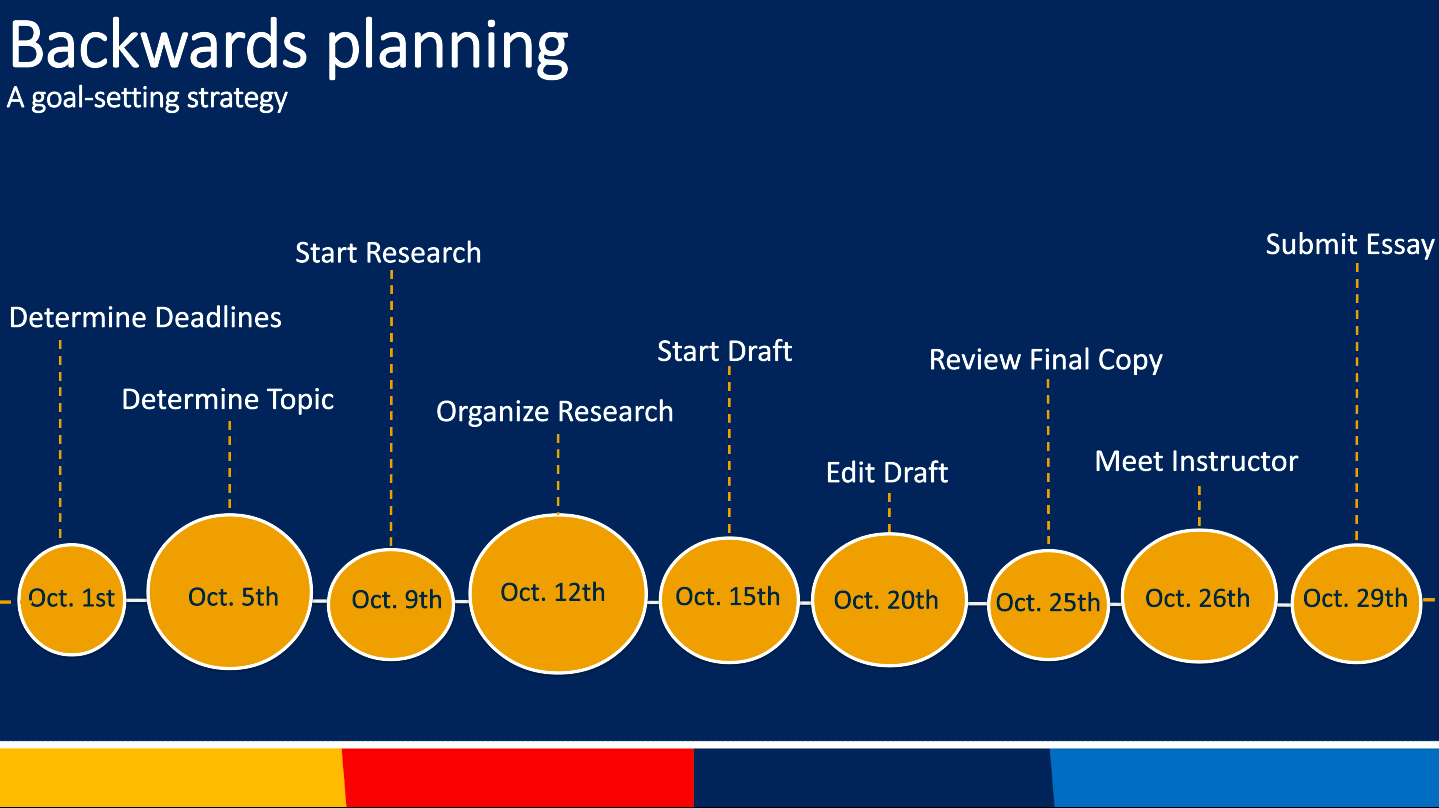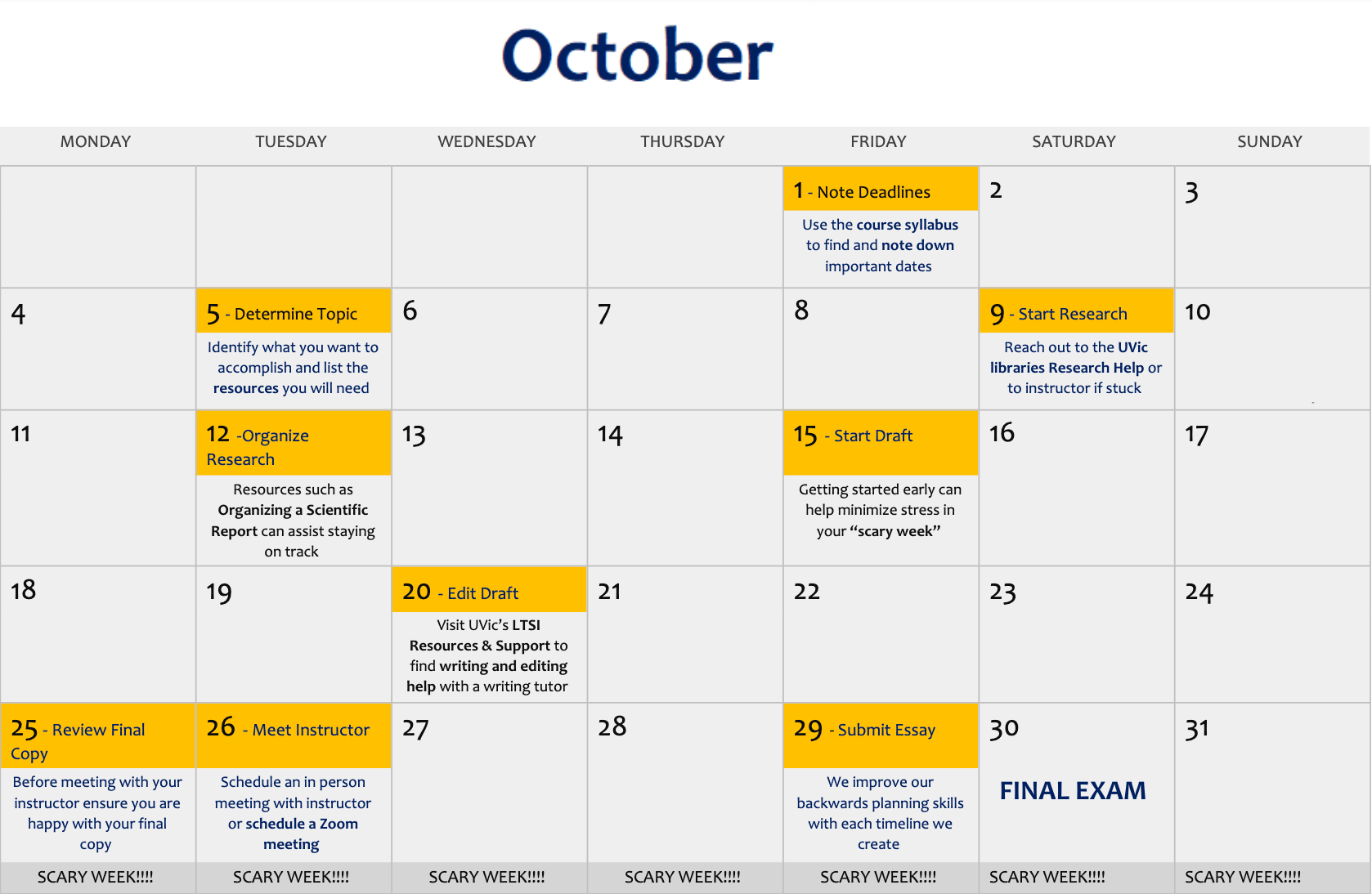Do you find yourself under a lot of pressure when taking on multiple tasks? Do you have trouble building a pathway towards your goal? Do you find it difficult to visualize the necessary steps needed to complete complex goals?
If you answered “yes” to any of these questions, then backwards planning might be for you. The essence of backwards planning is applying a retrospective approach to visualizing all the critical steps needed to complete a goal.
Why use backwards planning?
Studies show that this type of planning helps students to:
- Improve performance on goal-directed tasks
- Identify and avoid unnecessary activities
- Ensure effective use of time
- Become more motivated in the face of uncertainty.
- Plan for “scary weeks”
One of the main reasons that backwards planning has been so successful is that it’s much easier to visualize the critical steps of a plan from the point of view of having already achieved the goal.

What are “scary weeks”?
These are the weeks where you have multiple deadlines all at once. You may find yourself working on an essay, a group presentation, and a research paper that are all due on the same week. This will be very stressful and would mean that you are doing too much at once. Backwards planning is meant to help you plan ahead and make your “scary weeks” more manageable. Since you would never want to be in survival mode, always prepare and strategize!
Before starting your backwards planning timeline
1. Look at the course syllabus
Identify required tasks/assignments you will be given throughout the term.
2. Familiarize yourself with assignment requirements
Define what the goal of the assignment is and what exactly is being asked of you.
3. Understand the grading
Is there a breakdown of points or a rubric? It is important to know exactly what the instructor is looking for to know what you should be focusing on when creating your assignment.
4. Break it down
Split the assignment into various steps or phases, if the instructor has not already done so. Determine how much time should be allotted for each phase based on their difficulty and grade weighting.
For example, brainstorming might be a shorter first phase, creating an outline might be a longer second phase and so on and so forth. Be specific and intentional about what each phase entails.
Starting your backwards planning timeline
1. Start producing Target Dates
Decide when you wish to have each phase completed between now and when the assignment is due. Give yourself more than enough time to complete the phase as a cushion to minimize stress for yourself. Try your best to avoid “scary weeks” when you have lots of other commitments. Keep in mind when you are most productive. If weekends are when you get most of your work done, aim to have a phase completed by the following Monday.
2. Record dates in your Calendar
Navigate to your most used calendar, whether that be the Calendar widget on Brightspace, your Outlook calendar, Google calendar, etc. If possible, set reminders on the calendar to get notifications when a phase deadline is coming up so that you do not forget.
3. Seek support
This may be from your peers or from your instructors/teaching assistants to ensure your timelines are reasonable and achievable. It is important to remember change is inevitable and, therefore, do not be afraid to adjust dates as the semester goes on and things come up.
Sample backwards planned calendar for a single assignment

Watch an overview of backward planning
The video below includes information about what backwards planning is, the benefits backwards planning, how to plan backwards, and an example of a relevant calendar and timeline. The links lead to relevant resources about topics such as planning for assignments and using time management strategies.
We are here to support your learning!
Contact a CAC academic coach to discuss time-management, goal-setting, motivation and stress-reduction strategies.
If you are needing additional support, UVic has several virtual services for students offered through University of Victoria Student Support Services.
